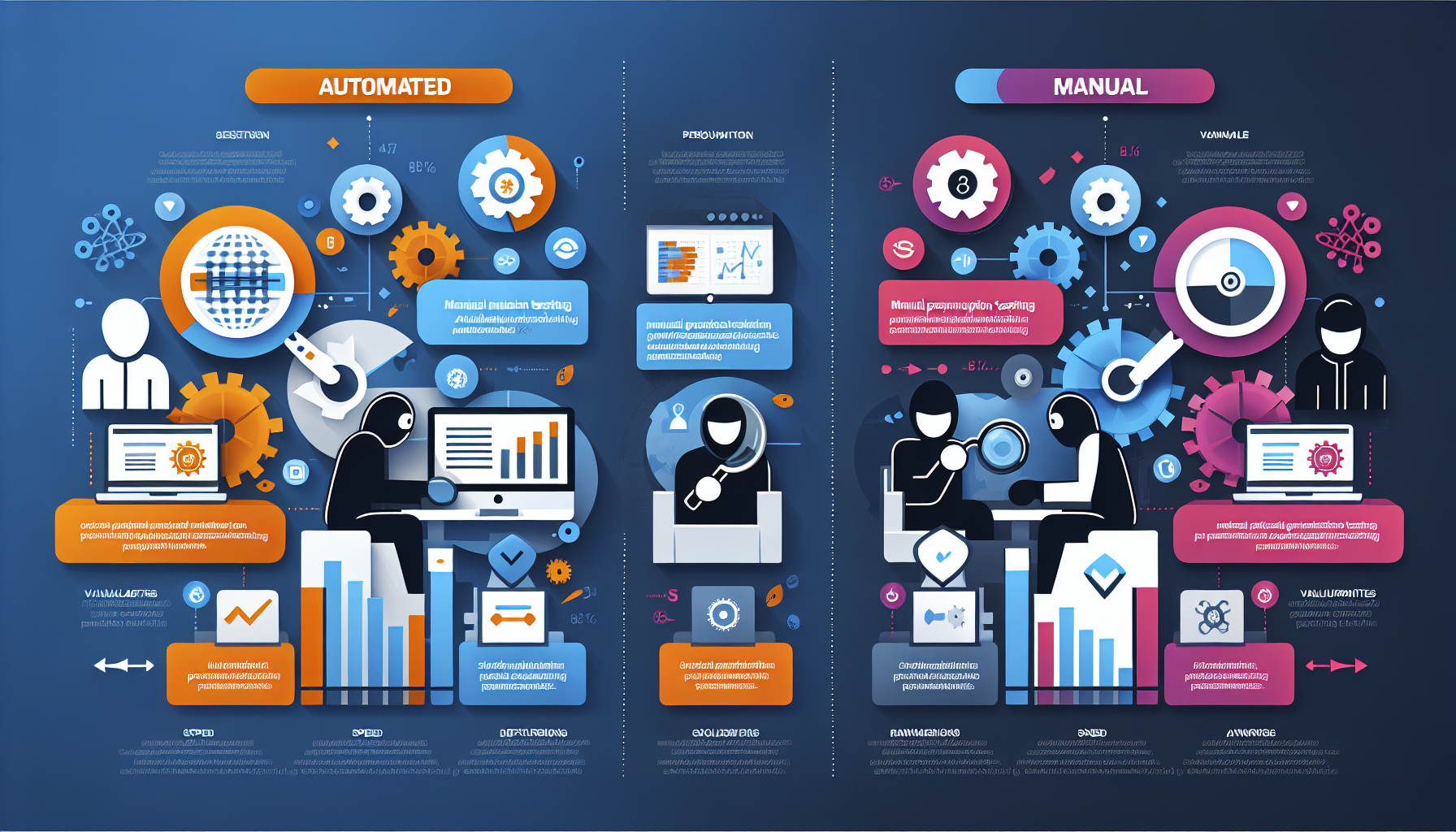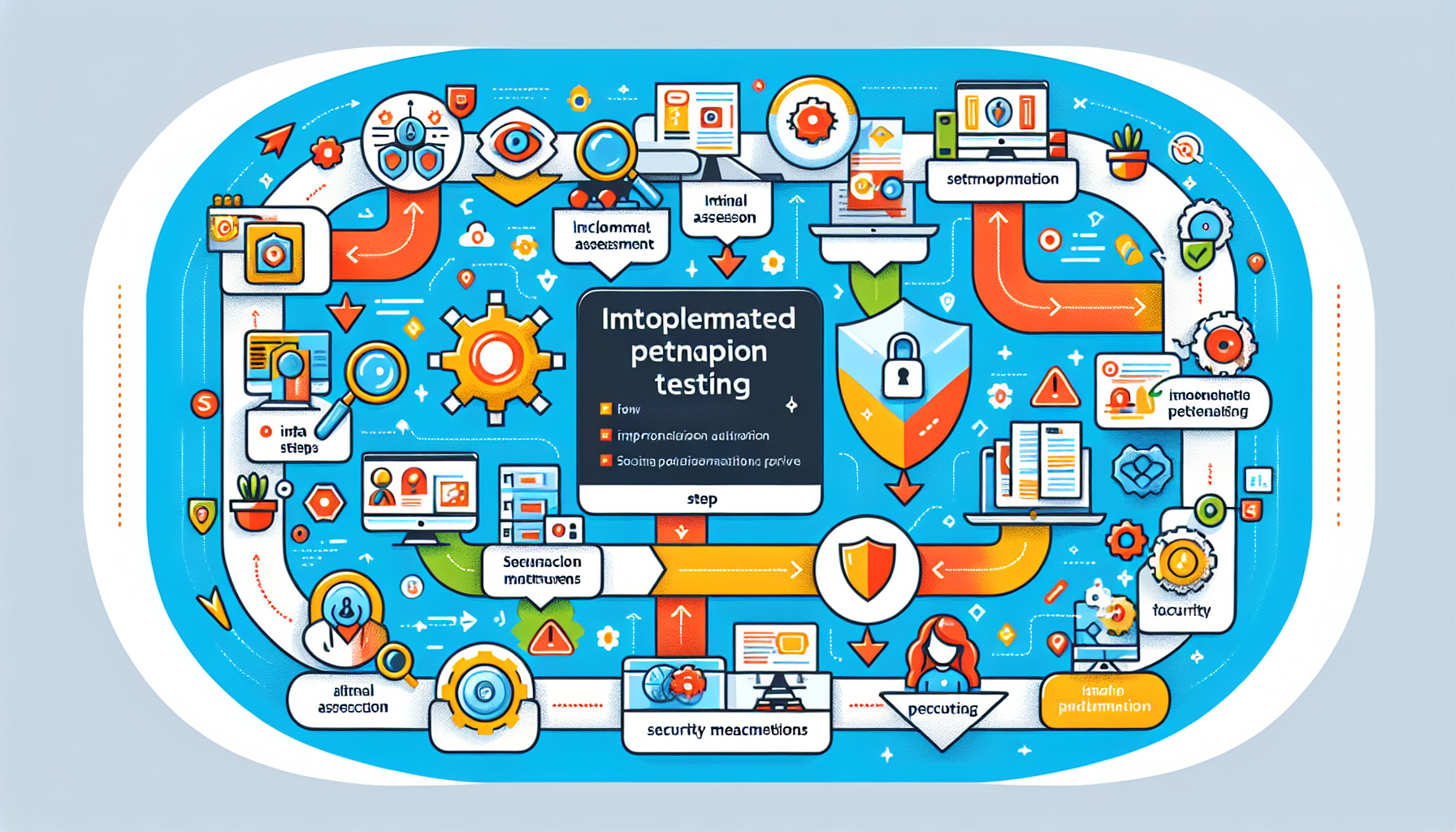Automated penetration testing uses specialized software to emulate cyberattacks on your IT systems. This helps find vulnerabilities before attackers do. It’s essential for strengthening your cybersecurity strategy through continuous and efficient assessment.
CISO Business Summary: The Case for Automated Penetration Testing
Automated penetration testing is a critical component of modern cybersecurity strategies, enabling organizations to proactively identify and remediate vulnerabilities across their IT environments. It combines speed, scalability, and cost-effectiveness to deliver continuous security assessments, ensuring resilience against evolving threats. Innovative platforms like FireCompass add value by enhancing attack surface discovery and delivering continuous, automated testing for comprehensive risk management.
Key Business Benefits
-
Continuous Risk Visibility:
Automated tools provide real-time, continuous assessments of your digital footprint, identifying exposed assets and vulnerabilities before attackers can exploit them. This proactive approach ensures that organizations maintain an up-to-date security posture, reducing blind spots. -
Operational Efficiency:
Automated testing streamlines repetitive tasks, allowing security teams to focus on strategic priorities. Platforms with intelligent prioritization, such as FireCompass, reduce false positives to zero and improve response times, ensuring vulnerabilities are effectively addressed. -
Cost Savings:
Automated testing significantly reduces the costs associated with manual penetration testing while delivering consistent, scalable assessments. -
Enhanced Security Outcomes:
Integrating automated testing tools into security workflows enables organizations to detect and address vulnerabilities earlier in the development lifecycle. Continuous testing ensures real-time adaptability to emerging threats, keeping defenses robust and dynamic.
Strategic Alignment with Security Goals
- Regulatory Compliance: Regular assessments ensure adherence to compliance frameworks such as PCI DSS, HIPAA, and NIST standards.
- DevSecOps Integration: Automated tools support early vulnerability detection by integrating with CI/CD pipelines, enabling secure software development and deployment cycles.
- AI-Driven Precision: Advanced platforms leverage AI to reduce false positives and prioritize vulnerabilities that pose real business risks, ensuring that critical issues are addressed promptly.
Understanding Automated Penetration Testing
Automated penetration testing involves using automated pen testing tools to simulate cyberattacks on systems, mimicking the actions of a potential attacker to uncover vulnerabilities. This approach is essential for organizations seeking to proactively enhance their security measures through continuous assessment and timely identification of vulnerabilities, including an automated penetration test, particularly in the context of automated penetration testing march.
Unlike traditional vulnerability scanning, which often provides a static snapshot of a system’s security, automated penetration testing offers an ongoing, dynamic evaluation. These tools mimic adversarial actions to offer a more comprehensive understanding of an organization’s security posture.
What is Automated Penetration Testing?
Automated penetration testing tools enhance security assessments by simulating real-world attacks to identify vulnerabilities. These tools utilize intelligent algorithms and threat intelligence to analyze vulnerability severity and prioritize risks efficiently. The primary goal is to proactively upscale cybersecurity measures before attacks occur, revealing and resolving security weaknesses.
Specialized software simulates cyberattacks to identify weaknesses in automated penetration testing. By employing known tactics, techniques, and procedures, these tools offer a holistic, attacker-centric perspective on security posture.
The key difference between automated and manual penetration testing is that automated testing uses scripted processes for repetitive tasks, whereas manual testing involves skilled professionals probing defenses. While manual penetration testing offers greater flexibility and deeper analysis, automated tools are invaluable for routine assessments, enabling continuous monitoring. Understanding how automated penetration testing differ from manual methods is crucial for effective security strategies.
Key Benefits of Automated Penetration Testing
-
Efficiency and Scalability: Automated testing, streamlines processes and enables scalable attack scenarios across extensive IT environments, saving time and resources.
-
Continuous Visibility: Regular automated scans, provide continuous visibility into your security posture, ensuring vulnerabilities are detected as they emerge.
-
Quick Remediation: Automated testing speeds up the validation-remediation cycle for critical vulnerabilities. These platforms help prioritize risks and recommend actionable insights for remediation.
-
Cost-Effectiveness: With tools like FireCompass, organizations can conduct frequent, scalable security assessments without the high operational costs associated with manual methods.
Common Challenges and Limitations
- Despite its benefits, automated penetration testing is not without challenges. One common issue is false positives, which can waste time and resources and potentially lead to the oversight of real vulnerabilities. Unlike most available tools, FireCompass prioritizes your vulnerabilities and reduces false positives by 100% so that you can focus on the most critical security gaps.
- Cybersecurity professionals play a crucial role in managing automated penetration testing results. They analyze findings, mitigate false positives, and improve the overall security evaluation. Human oversight is crucial for accurately interpreting results and addressing nuances that automated tools might miss. FireCompass adds the expert in the loop along with automated pen testing.
- In addition, automated penetration testing may fall short in identifying complex vulnerabilities such as business logic flaws and privilege escalation issues. Unlike other platforms,
- FireCompass has several multi path attack tree playbooks that can test complex vulnerabilities and business logic testing.
Automated Penetration Testing Tools
A variety of software tools are employed in automated penetration testing to imitate cyber threats and identify system vulnerabilities. AI and machine learning integration enhances these tools’ ability to manage vast data and identify vulnerabilities more efficiently.
These tools are essential for organizations looking to maintain a robust security posture. The market provides various options, each with unique capabilities tailored to different needs. Knowing the strengths of these tools helps organizations select the right solution for their security challenges.
Selecting the Right Tool for Your Needs
Selecting an automated penetration testing tool requires considering the specific needs of your organization. Features like penetration depth and a high number of vulnerability tests are essential. Tools should simulate real-world attacks and scan behind logins and protected screens for comprehensive testing.
Automated testing tools can be configured to delve deeper into vulnerabilities based on the sensitivity setting and organization’s risk tolerance. Regularly evaluating and updating testing tools keeps pace with evolving security threats and technological advancements.
Integrating automated penetration tests with a risk management platform can automate risk-based prioritization and the vulnerability management lifecycle. This integration enhances the overall effectiveness of your security strategy by providing a consolidated view of vulnerabilities and their impact.
Comparing Automated and Manual Penetration Testing
A blend of both automated and manual testing provides the best approach for effective penetration testing. Manual penetration testing provides a deeper analysis and is capable of uncovering trickier vulnerabilities that automated tests might miss. However, it often requires a significant investment of time and resources, leading to higher costs for organizations.
Automated testing allows for regular assessments at scale, complementing manual testing that adapts to uniquely configured systems. Automated penetration testing cannot completely replace manual testing, as it lacks the nuanced understanding to tackle complex security scenarios effectively.
Speed and Efficiency
Automated testing can be executed rapidly, allowing for frequent assessments without significant additional costs. Automated tools can scan systems and applications in a matter of hours or minutes, potentially assessing vulnerability severity within minutes. This speed is crucial for organizations needing to stay ahead of cyber threats.
AI significantly enhances the speed of automated penetration testing, reducing assessment times from weeks to hours. Automated testing lacks the depth of manual testing and does not provide a full range of insights.
Choosing tools that minimize false positives saves time and resources for security analysts.
Depth and Flexibility
Manual testing uncovers complex vulnerabilities that automated tools might overlook due to their predefined nature. The flexibility of manual testing allows for tailored assessments that adapt to the unique configurations of different systems. Such adaptability is crucial for addressing specific vulnerabilities automated tests might miss.
An effective automated penetration testing tool should simulate real-world attacks and scan behind logins. This capability ensures a comprehensive assessment of an organization’s security posture.
Best Practices for Implementing Automated Penetration Testing
Clear objectives are vital for effective automated penetration testing. Set regular schedules, prioritizing critical assets for testing. There is a growing emphasis on automation to enhance the efficiency of security testing processes.
Integrating automated testing with existing security measures ensures alignment with the overall security strategy. This fortifies defenses and improves the ability to identify and remediate vulnerabilities.
Integrating with Existing Security Measures
Incorporating automated penetration testing within DevSecOps pipelines helps identify vulnerabilities during software development. Successful integration requires collaboration between development and security teams. Integrating with CI/CD pipelines automates regression testing after updates, enabling early detection of vulnerabilities.
Integrating findings from automated penetration tests with risk management platforms enhances overall security strategies. Such integration fortifies defenses against vulnerabilities and improves security posture.
Continuous Monitoring and Regular Assessments
Continuous monitoring aids in real-time threat detection. Automated testing integration with DevSecOps facilitates continuous security assessments throughout development. Automated penetration tests enable ongoing evaluations of security posture.
Conduct regular automated tests and ad hoc scans as needed. Scheduling automated tests helps establish baselines and compare results over time. Regularly evaluating and updating automated testing tools is necessary to adapt to new security threats and technological changes.
Combining Automated and Manual Testing
Combining automated and manual penetration testing leverages their strengths for thorough security assessments. A unified penetration testing strategy enhances overall resilience against cyber threats.
AI enhances vulnerability detection precision by performing sophisticated simulations mimicking real-world attack scenarios. AI-driven tools correlate vulnerabilities across multiple scanners to better identify complex attack vectors. This approach reduces false positives in vulnerability reporting by prioritizing vulnerabilities posing real business risks.
Machine learning algorithms adaptively refine detection methods based on historical vulnerability data.
The Role of AI and Machine Learning in Automated Penetration Testing
AI and machine learning enhance tools’ capabilities to predict vulnerabilities, shaping the future of automated penetration testing. These technologies improve the accuracy and efficiency of automated tests, enabling more precise vulnerability detection and risk prioritization.
Emerging trends involve AI integration for better accuracy in vulnerability detection, allowing tools to learn from past data and adapt to new threats. This continuous learning ensures potential risks are identified and prioritized more effectively, increasing overall security.
Enhancing Vulnerability Detection
AI enhances fuzzing in automated penetration testing by developing adaptive strategies based on past exploits. This ability allows for more sophisticated simulations of real-world attacks, improving security flaw detection. AI improves correlation by predicting how attackers might chain vulnerabilities, enabling accurate risk prioritization.
Integrating automated testing tools like FireCompass within existing security measures, ensures vulnerabilities are addressed early in the development lifecycle. This integration enhances your organization’s ability to detect and remediate vulnerabilities continuously and effectively.
Real-Time Threat Modeling
AI enhances automated penetration testing by analyzing real-time threat intelligence. Real-time analysis enables automated testing tools to adapt and counter emerging threats effectively. Integrating real-time intelligence from various security sources, AI can dynamically update testing parameters to counter new vulnerabilities.
This allows organizations to enhance their cybersecurity posture through timely and efficient automated penetration testing. Improved threat intelligence helps organizations stay ahead of emerging threats and ensure continuous protection against advanced cyber attacks.
Future Trends in Automated Penetration Testing
Technological advancements and complex threats drive rapid changes in automated penetration testing. AI and machine learning are pivotal, shaping the future of these tools by adapting to new threats through continuous real-time intelligence integration from various security sources.
AI performs continuous threat analysis, helping organizations stay ahead of emerging vulnerabilities that may not yet be identified. Analyzing emerging threats, AI empowers automated tools to preemptively adjust testing parameters to counter new vulnerabilities.
The future of automated penetration testing lies in leveraging advanced technologies like AI, machine learning, and platforms like FireCompass. These solutions enable real-time threat modeling, adaptive security assessments, and integration with DevSecOps workflows, ensuring organizations stay ahead of emerging threats.
Summary
Automated penetration testing is an essential tool for modern cybersecurity, providing continuous assessment and timely detection of vulnerabilities. By leveraging advanced technologies such as AI and machine learning, these tools can predict and counter emerging threats more effectively. The combination of automated and manual testing offers the most comprehensive approach to securing an organization’s assets.
As we move forward, integrating automated penetration testing within DevSecOps pipelines and utilizing advanced threat simulations will be crucial. Organizations must stay ahead of the curve by adopting these technologies and continuously updating their security measures. Embrace the future of cybersecurity with automated penetration testing to ensure your defenses are always one step ahead.
Frequently Asked Questions
What is automated penetration testing?
Automated penetration testing utilizes software tools to simulate cyberattacks, effectively identifying and addressing system vulnerabilities on an ongoing basis. This approach enhances security by ensuring continuous evaluation of potential threats.
How does automated penetration testing differ from manual penetration testing?
Automated penetration testing utilizes scripts for routine tasks, making it efficient for common vulnerabilities, whereas manual penetration testing relies on expert insight to identify intricate security issues. Each method serves its purpose, but a combination often yields the best results.
What are the benefits of automated penetration testing?
Automated penetration testing offers significant benefits such as time savings, improved efficiency, and cost-effectiveness, while ensuring consistent assessments that enhance your organization's overall security posture.
What are the common challenges of automated penetration testing?
Automated penetration testing often faces challenges such as false positives, insufficient human oversight, and limitations in identifying complex vulnerabilities that necessitate manual evaluation. Therefore, a combination of automated and manual testing is advisable to ensure comprehensive security assessments.
How is AI enhancing automated penetration testing?
AI enhances automated penetration testing by improving vulnerability detection through learning from previous data, predicting potential attack chains, and facilitating real-time threat modeling, resulting in more accurate and efficient assessments.






Comments